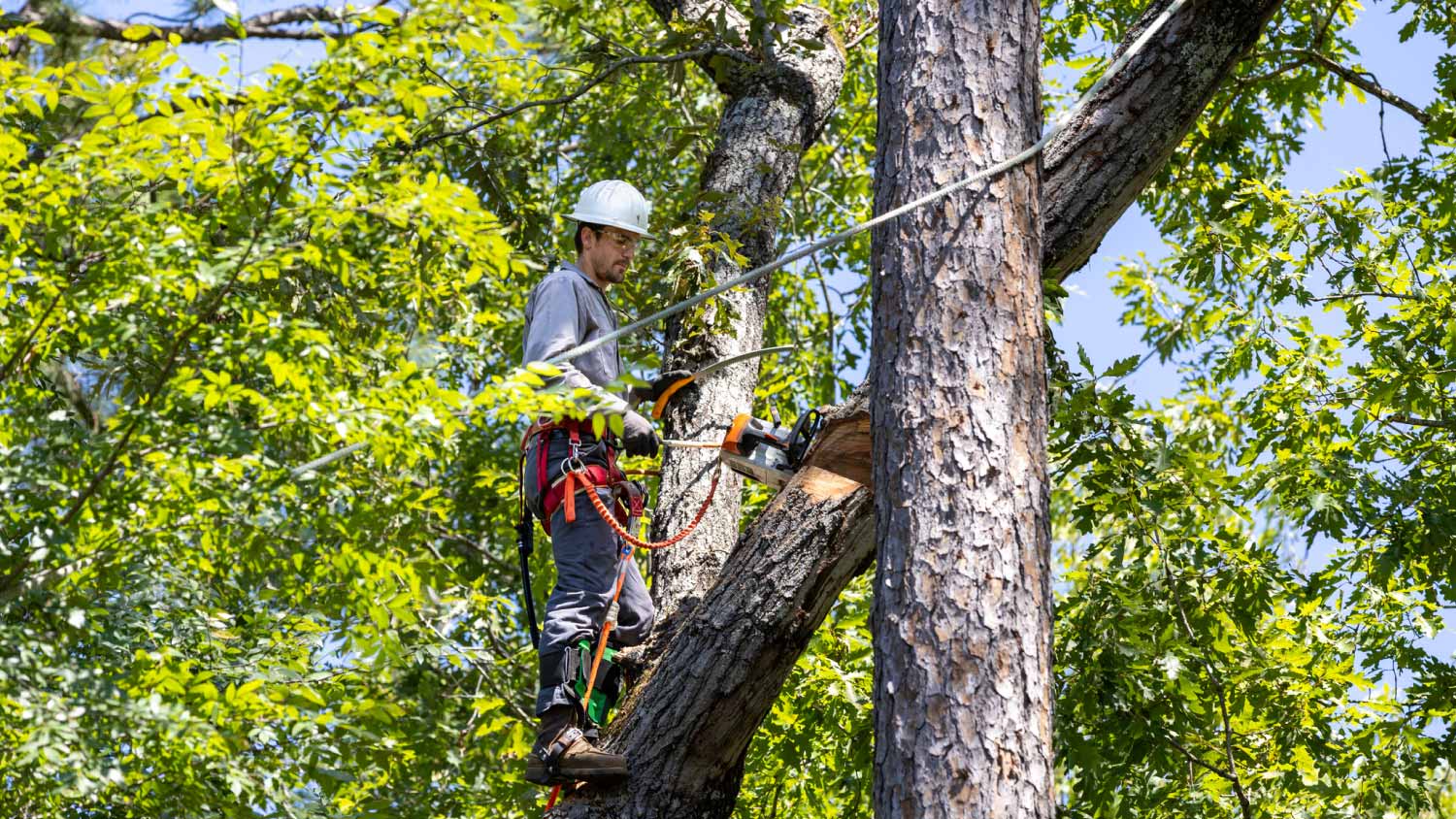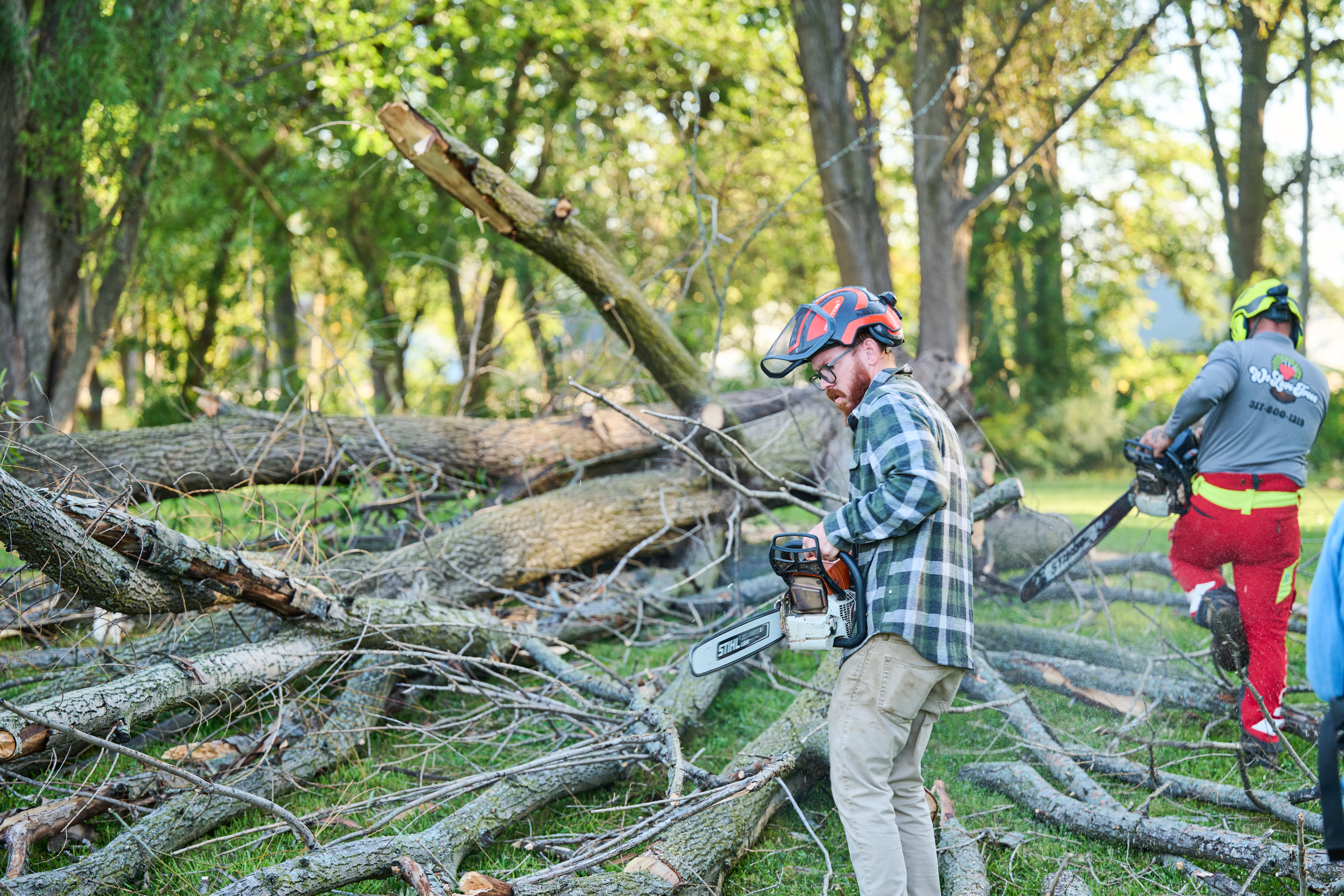
How much does it cost to rent a chainsaw? Whether it’s for cleaning up your yard or cutting firewood, learn what options are available and what you’ll pay.
When it comes to a perfectly manicured yard, timing is everything


Prune flowering shrubs after they flower but before new buds form.
Prune evergreen shrubs in early to late spring.
Most shrubs can handle being pruned up to one third of their height.
Pruning shrubs at the right time will keep them healthy and lush. But not all plants are the same, so knowing when to prune shrubs can be a challenge. Luckily, there are some simple ways to determine the right time to trim back almost every type of bush or shrub you could have in your garden. Whether you decide to prune your shrubs yourself or hire a local tree pruning service to help you with the task, here are some helpful tips to keep your pruning schedule on track.
When trimming trees, it's essential to prioritize safety by maintaining a safe distance from power lines, avoiding the potential fall path, and wearing protective gear. We strongly recommend hiring a professional tree service to trim large trees, given the significant safety risks.
The best time to prune flowering shrubs is right after they flower but before new buds form. To make sure you get good blooms the following season and that the plants grow healthy foliage in the spring, timing for trimming is important. Here are some guidelines for pruning flowering shrubs.
If you have a shrub that blooms in early spring, such as an azalea, forsythia, or lilac, trimming it right after it has flowered is best. Although most flowering species form buds in the springtime, early spring flowering plants form buds in summer that overwinter on the plant. Trimming these types of flowering shrubs in late fall or winter will kill next year’s crop of flowers and can damage the plant’s ability to grow healthy leaves.
You can usually prune shrubs that flower in late spring and summer, like roses, oleander, and mock orange, during late winter when the plants are still dormant and before they form buds. Make sure to check the branches of your shrub for buds before you trim. Although you won’t be cutting off new flower buds if you trim these shrubs during the summer, you might be stifling their growth. Pruning during the hottest stretch of the summer, which is another time when the plants are often dormant, is also an option for late spring and summer flowering shrubs. Just do so with care so you don’t remove too much of the foliage the plant needs for photosynthesis.
Flowering shrubs that bloom in late summer and autumn, like rose of sharon, butterfly bush, and daphne, should be pruned in late winter or early spring. Trimming them before they form buds will help them form healthy foliage and flower prolifically all season long. These bushes shouldn’t be pruned right after they bloom because they are still active into the beginning of the winter. Taking advantage of their dormant season from late winter into early spring will protect their blooms and help them to produce fresh growth during their active season in summer and fall.

Evergreen shrubs are divided into the three major categories below, and although they might appear similar, they have different needs when it comes to pruning. Here’s how to handle pruning the different types of evergreen shrubs and when to do so for the best results.
Juniper varieties of evergreens should be trimmed in early spring before they sprout any new growth. At this time of year, you will be able to shape them before the new growth comes in, keeping newer sprigs healthy while making the shrubs look full and well shaped. You can technically prune them at any time when the weather will be above freezing, but trimming them before new growth comes in will make them grow more evenly. You should never prune juniper shrubs when it’s below freezing, because this can seriously damage the branches.
You should trim arborvitae shrubs in early spring, once the risk of frost has passed. You can also choose to do a second pruning of your arborvitae in fall, before freezing temperatures hit, in order to keep them well-shaped and thick. Doing any trimming of your arborvitae during freezing temperatures can damage the new growth on the branches that hasn’t had the chance to develop its thicker bark for winter.
Pine shrubs can only be trimmed once new growth has begun. This usually occurs in early to late spring, and you will be able to see it because it will be a lighter shade of green than the rest of the needles. These growth shoots, sometimes referred to as candles, can be trimmed by one third to one half once they appear in order to keep the shrub evenly shaped. Pine trees can’t produce new growth from the woody stems once they have formed bark, so to avoid damage, you should never prune into the existing branches of the tree.
If you plan to trim with a hedge trimmer for shaped shrubs, you should wait until you notice new growth on your shrubs in spring. Since these types of shrubs are at their most active in spring, it’s a good time for them to recover from a comprehensive trimming. For topiaries that require a lot of shaping, you can trim them whenever necessary through early fall. But don’t prune them in late fall or winter, because you’ll stimulate new growth on the plant and won’t leave it enough time to grow a protective outer bark before temperatures get below freezing.
From average costs to expert advice, get all the answers you need to get your job done.

How much does it cost to rent a chainsaw? Whether it’s for cleaning up your yard or cutting firewood, learn what options are available and what you’ll pay.

The cost to remove palm trees depends on several factors, including their size, location, and more. Our guide shows the average palm tree removal costs.

Find out how much it costs to plant a tree based on the number of trees, their size, where you want to plant them, and DIY versus professional costs.

What is an arborist and do they cut down trees? Learn what an arborist is, the services they offer, and when to hire one.

If you have a strange branch growing from the roots of your tree, it might be a sucker. Here’s how to get rid of tree suckers without damaging your tree.

Trees are fantastic marvels of nature, but they can also be large and cumbersome. Can you get the city to trim or remove a tree for free? Keep reading to find out.